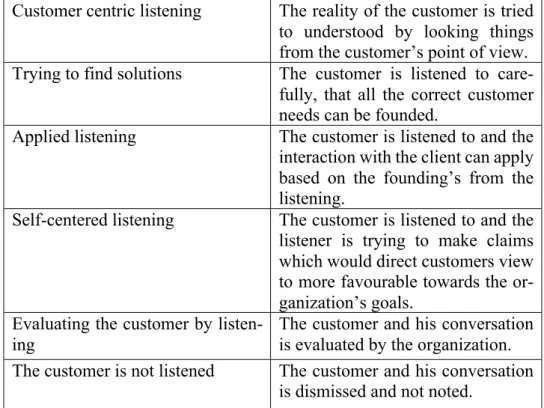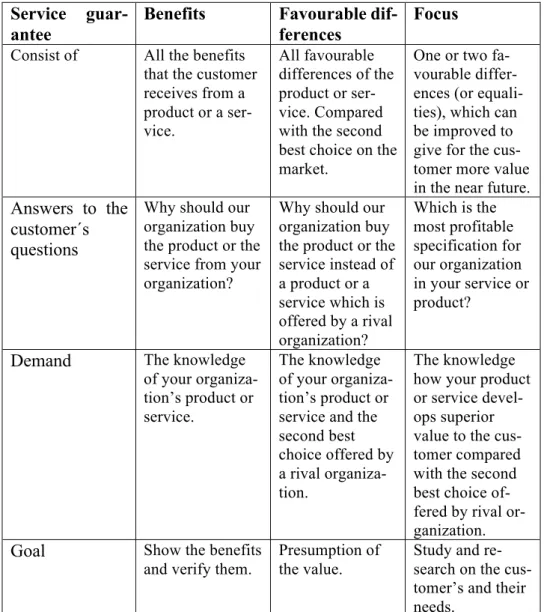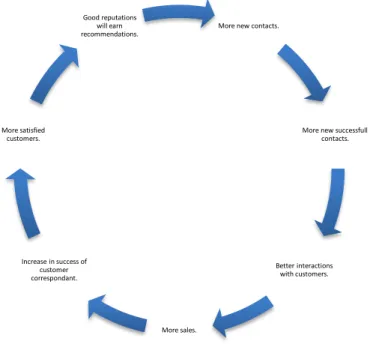The Practice Center is part of the intermunicipal federation for education in Ita-Uusimaa. The Federation has different Edupoli and Amisto organizations, and the Practice Center is part of the Edupoli organization.
Planning of the services
Only this cannot in itself lead to customer persistence, but it is part of the process. This could be where the focus should be placed in the Apprenticeship Centre's strategy, because the persistent customers are the most likely to be valuable customers.
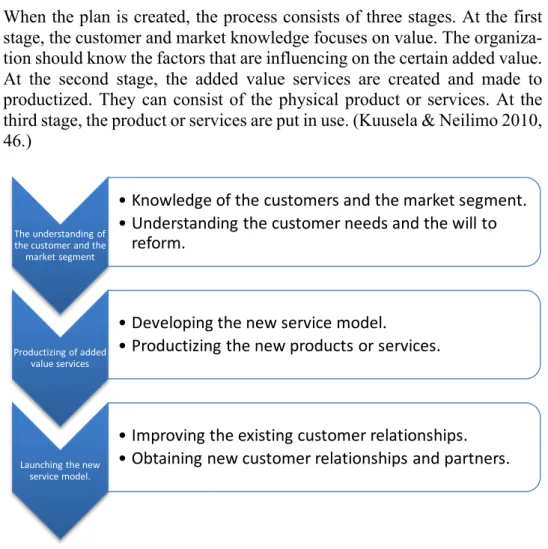
Customer expectations and needs
Enhanced service model
The customer's view of the interaction with the organization's personnel is essential to the service product. The image of the organization has a positive effect on the customer's sense of quality.
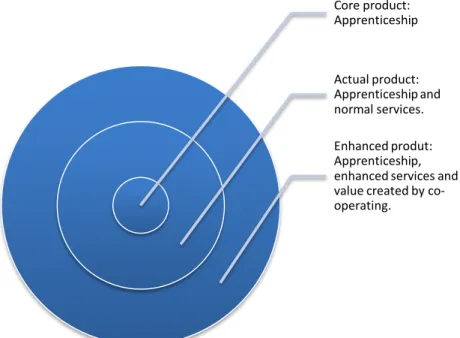
How to offer better service
- Committing the organization to new level of service
- The new approach for thinking
- Skills and perks needed to be a customer service specialist
- Service guarantee for the customer
- Plan of the customer relationships
The approach to customer-centric thinking comes from the organization and the high motivation of employees in the organization at all levels. The staff must be able to anticipate the customer's needs and be able to respond. Part of this knowledge of human relations is to understand the feelings of the customer.
This includes knowledge of the customer's markets and the end users of the customer's products or services. The summary of the client collaboration is that the account manager is interested in the client and must co-exist with the client.
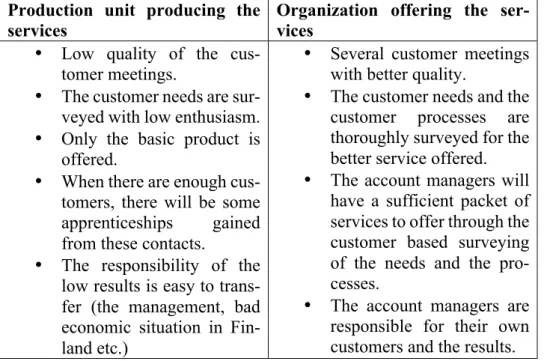
Implementing and evaluating the services
The quality of the service
The interactions between the customer and the service provider organization determine the quality of the service. The customer gets the experience of the quality and the value through other intangible parts. The staff consists of the professionals, but is also able to solve the customer's problems.
The reputation of the organization is important when it comes to new customers. The consumer expects a certain amount of quality and expectations are created through advertising.
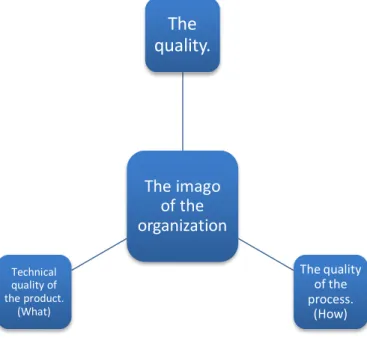
Measuring the quality of the service
Once the factors are known, they can be added to satisfy customer inquiries. Here, a comprehensive survey of the buyer and, above all, qualitative research, where we look at the buyer more personally, is of key importance. Korkman and Arantola state that the best and most relevant information cannot be requested from the client and must be obtained in another way.
Often the information obtained from the interaction with the customer is only present in the mind of the person responsible for this customer. In the case of the Apprenticeship Center, the same service is available to the customer from another provider if they are not satisfied.
The customer enquiries of service
Measuring customer value can be done by considering six different criteria: the time spent on part of the process (speed and staying within a schedule), the production of the right service for the current situation (fairness and flawlessness), and the amount of service produced. Does the customer think your service is better compared to other service providers. If there is a problem, does the customer ask you to fix it and not change the service provider.
A good and rarely used solution to customer satisfaction is to interview lost customers. The questions of this thesis focus on increasing the number of qualifications offered to clients and gaining client persistence by offering them the overall service model from the Practice Centre.
Goals
3 THE RESEARCH QUESTIONS AND THE PURPOSES OF THE THESIS This chapter focuses on the aims and questions of the research.
Questions
Surveys
Interviews
In the current study, interviews are conducted with five existing clients of the Apprenticeship Centre. In the interview, the order of the questions may vary, and some new questions may be found in the conversation, covering the entire field of research. Data quality is the most difficult part of this kind of qualitative and semi-structured interview.
In this case, quality is not an issue because the survey questions are only the customer's feelings and needs. The will of the interviewer should remain neutral and avoid directing the conversation to serve the personal conviction and the author.
Participant observation
Participant observation was chosen as the research method because the most useful source of information for the research questions of this thesis is the normal daily interaction with the customers of the Apprenticeship Centre. Many of the ideas for the new products or services come directly from the customers during these meetings. This chapter summarizes the analysis and results of the data collected in this study.
37 informants reviewed the questions, but the format of the open-ended questions was too complicated or time consuming and they closed the survey. This time it is already holiday season in Finland and this could have some effect on the lack of answers.
Surveys
Some of the answers were about giving information and advice about the Apprenticeship Centre's services:. Many of the answers share the same values as mentioned earlier about the customer service specialists. The training organizations that work as partners of the apprenticeship center are given some credit with the training programs in operation.
The need for personal service and support during the apprenticeship is also one of the requirements of the current services. The value should be measurable and should support the customer's core business.
Interviews
The Learning Work Center already provides information in many ways, but the amount of information can still be expanded, because many organizations in the area are not familiar with learning work. The customer who has already used the services of the Apprenticeship Center said that the actions of the Apprenticeship Center partner organizations should be more coordinated from the Apprenticeship Center. When the organization should have the need, the information of the available services should be easily accessible.
The customer respects the partner organization when the organization understands the customer's business. Good and functional collaboration and availability of support are important values for the practice itself and for client organizations.
Observations
For the larger organisations, there is a need for the services, and they have many variables. One thing in common for customers in large and small organizations and organizations in different business sectors: the information about the apprenticeship and its support services. The desirable process is that the customer knows that the service provider would have different solutions for them.
The customer wants the service provider to listen, identify the problem and offer a ready plan with a ready price to solve this problem. If the customer's resolution criteria are met and the price correlates to the expected value, the product is sold.
Results of the research
The basic need is support and training of the mentors for the apprentice students. A really important note was that many of the customers felt that the service does not need to be improved. The amount of services is not a key, but the number of services should vary enough for each customer to choose the services and the ways they need and value for themselves.
Apprenticeship center staff have an "I can" attitude and this attitude should be strengthened. The apprenticeship center's action plan for the coming years can be drawn up based on the hypothesis.
Reliability and validity of research
This chapter discusses the accuracy of the research and new thinking that emerged during the dissertation process. The validity of this research is still being confirmed, the answers in the questionnaires were insufficiently in-depth and concrete. In the interviews, the author could ask for reinforcement of the questions in order to get more precise answers to those questions.
The observation of the daily customer interaction was able to back up the data obtained from the questionnaires and interviews. The questions about the value to the customers produced fine data in accordance with the hypothesis.
The thesis process and what was created
The product is based on a current customer need and the true value can be assessed after the product has been put into use.
What could be done in the next research
The research has many different uses in the working community and has been updated by some already during the practice process. The focus is on finding new ways for day-to-day operations to create value for customers in the various ways mentioned in this thesis. Development should be constant and this thesis will provide a good basis for further ideas.
What is the contribution of the study to the workplace?
The plan becomes customer-centric and focuses on creating value, quality and meeting customer expectations and needs as stated in 2.1.1. This development plan will be made in November 2016 by the Apprenticeship Center team. The guarantee created will visualize for the customer the value that can be obtained by using the services of the Apprenticeship Center.
All processes of the Apprenticeship Center must be able to create value for their customers and provide the guarantee of a certain quality. The service is already being measured constantly, but the meters and questions need to be thanked to measure more of the customer value.
New procedures?
Just as in the theoretical framework, the quality of the different customers depends on different aspects, and customer managers must be able to show the quality and value for the customer that the collaboration with the apprenticeship has achieved. Center. Together with the customer, the account manager finds out what needs the customer has and what different qualification options are available in the customer's organisation. In the interviews and introductions, there are modern web-based technologies, the videos from the interviews, etc.
The evaluations have been continuously developed throughout the country in cooperation with the work-study centers in Finland. This development is continuous and based on the public procurement of the evaluations of apprenticeship training.
